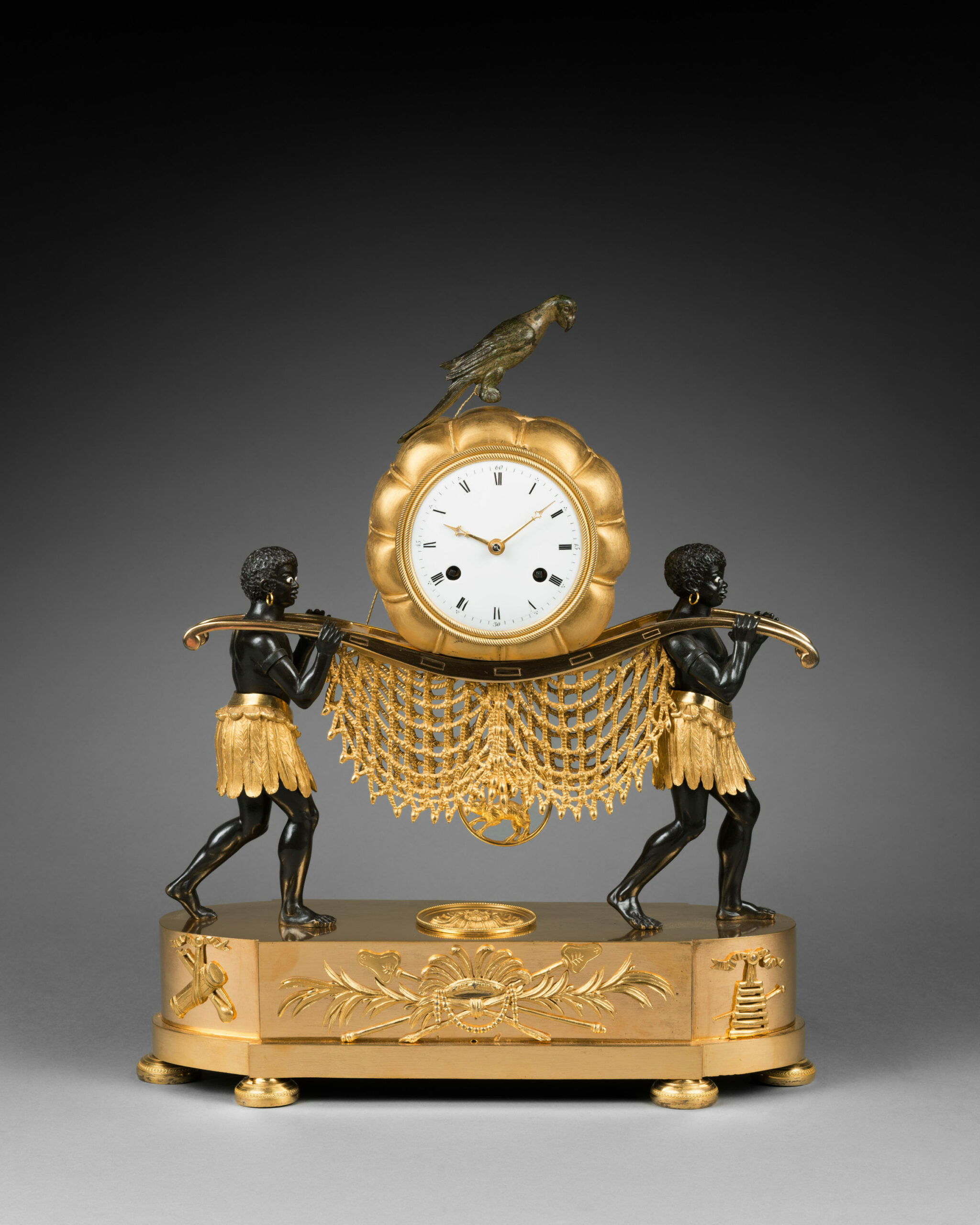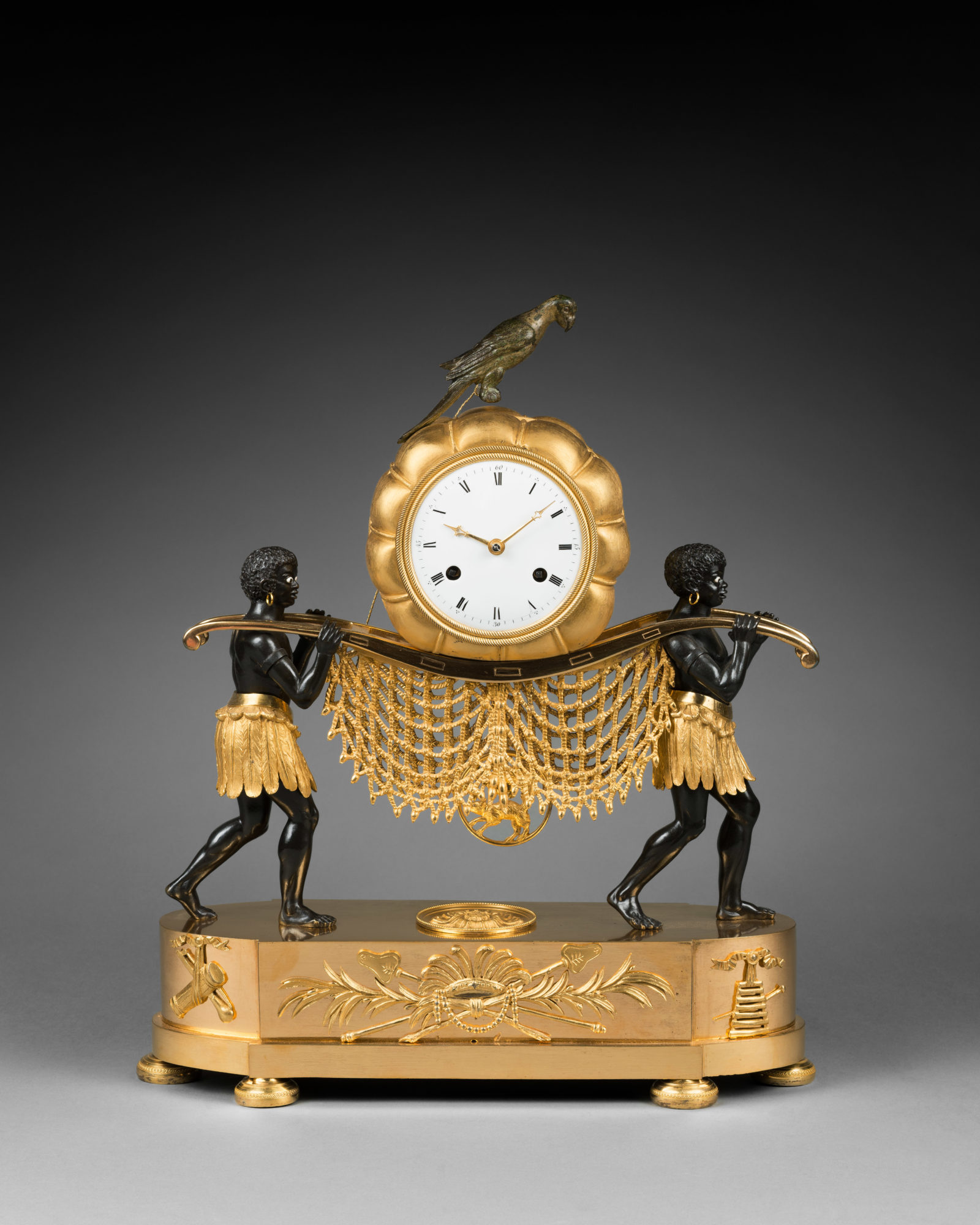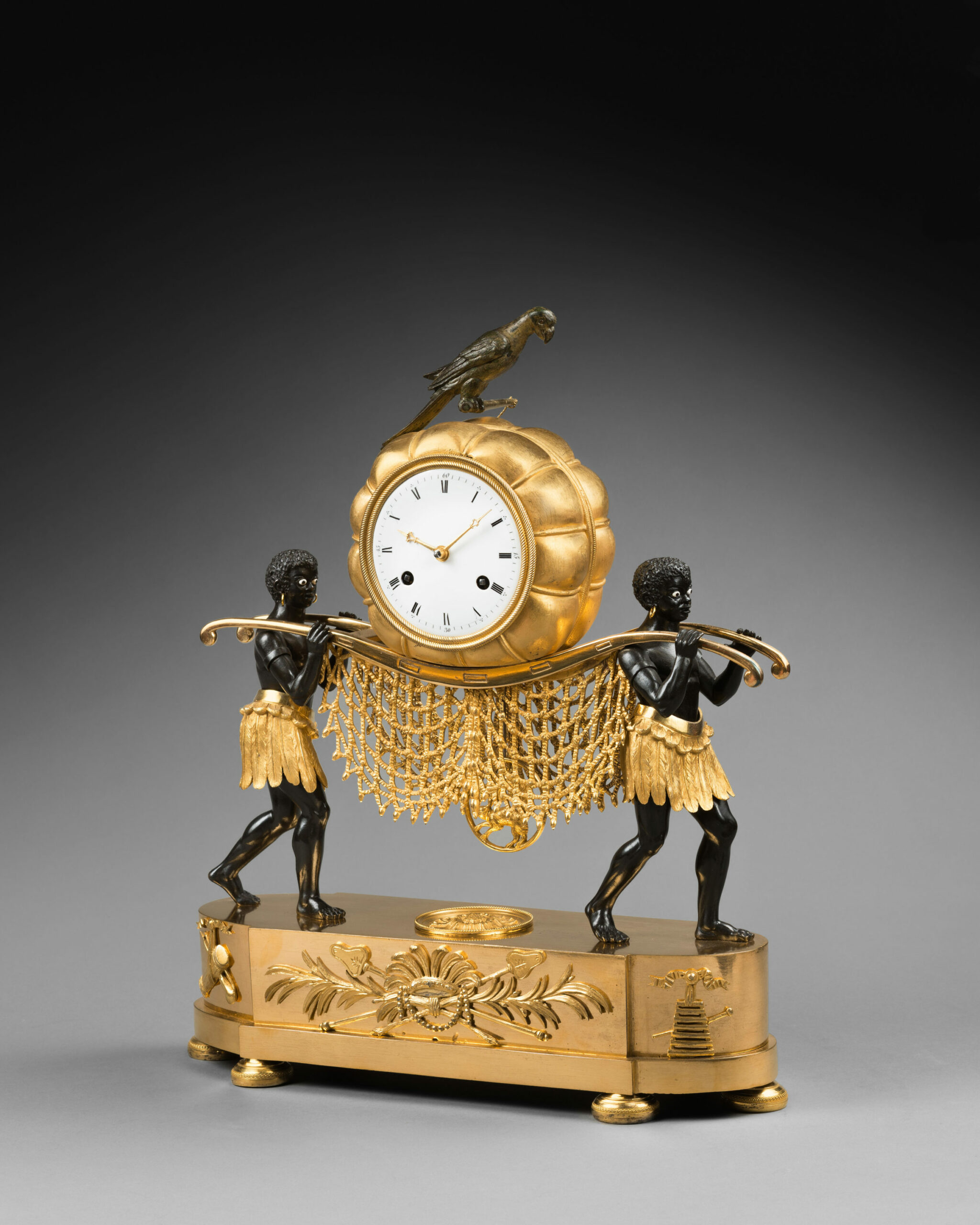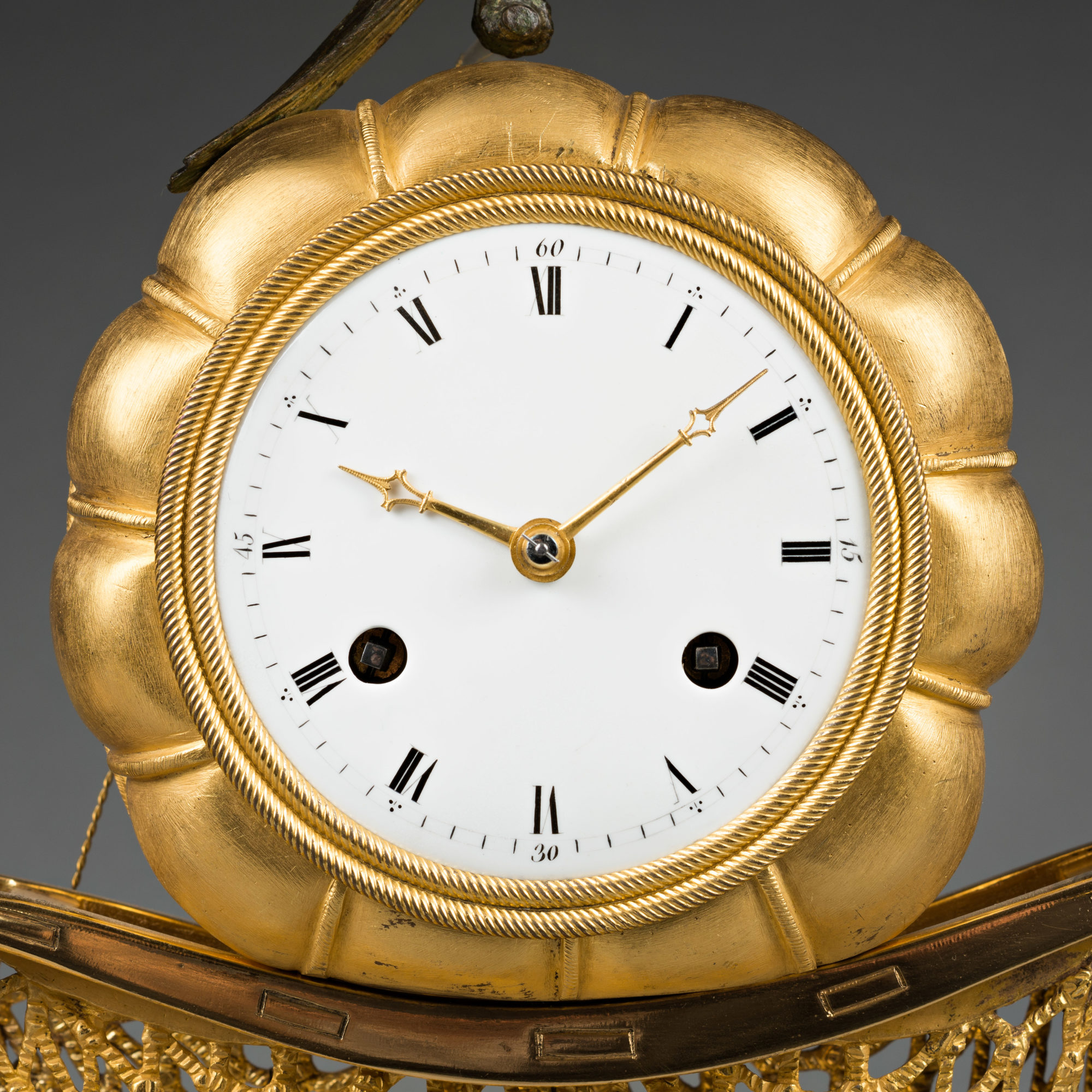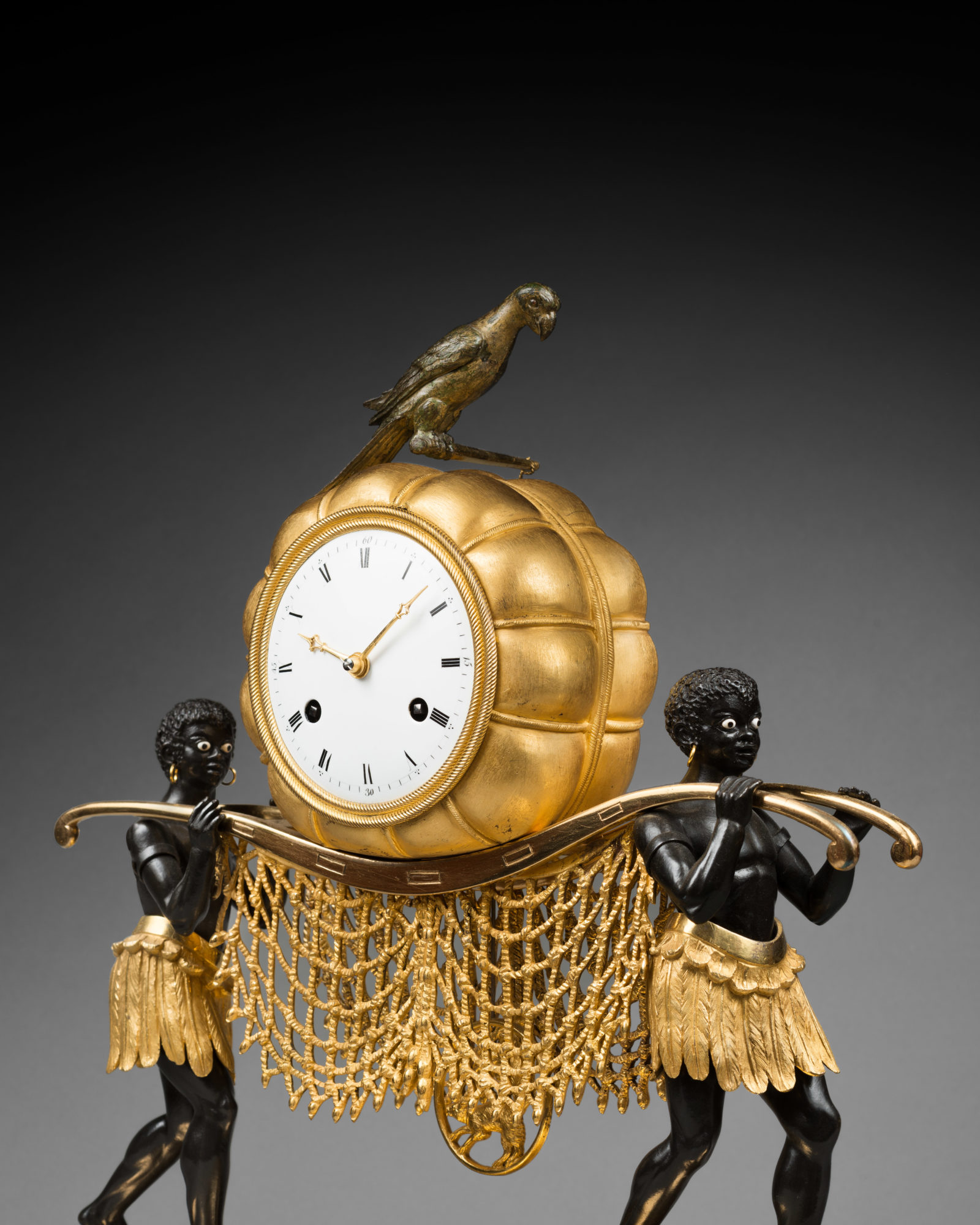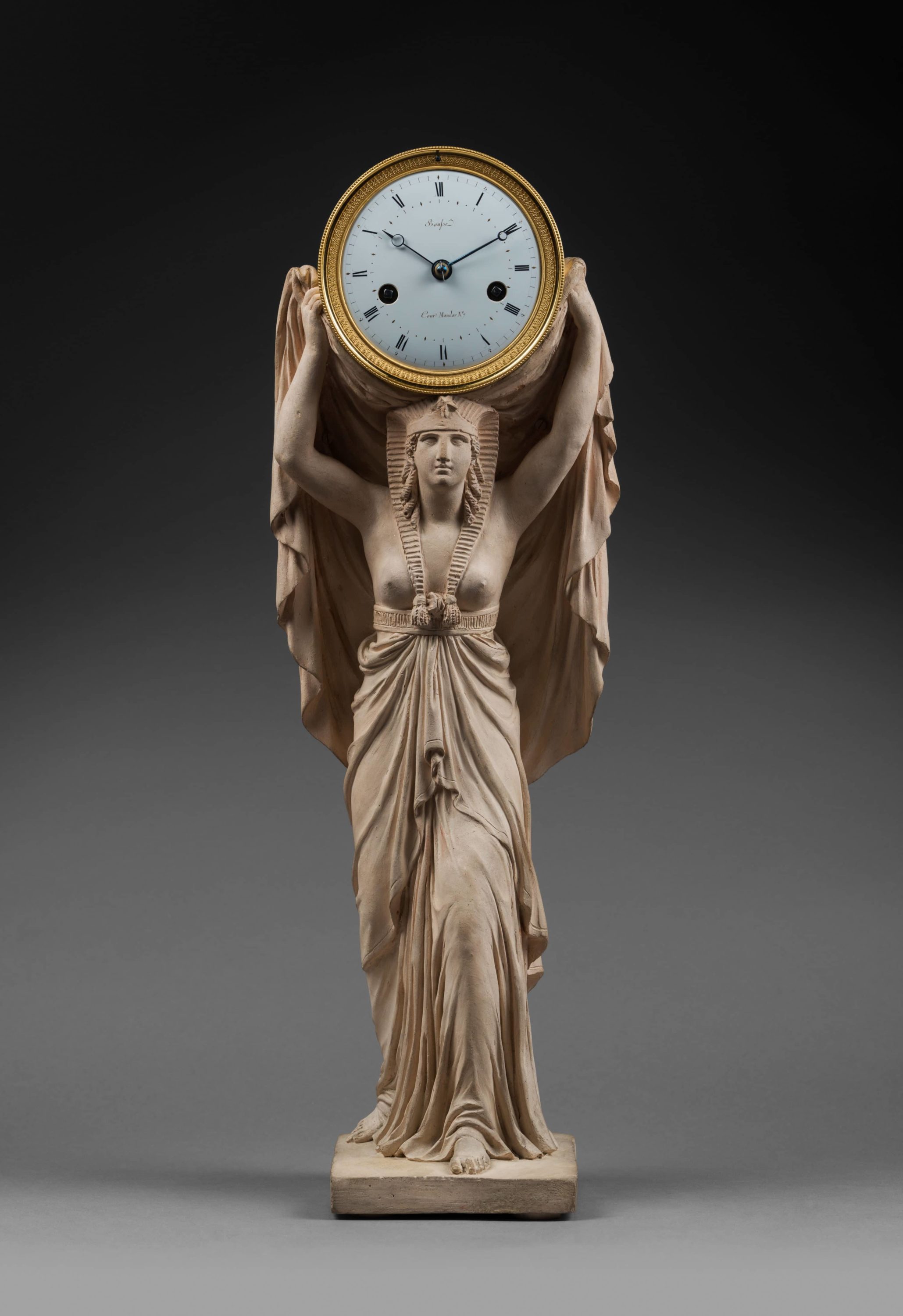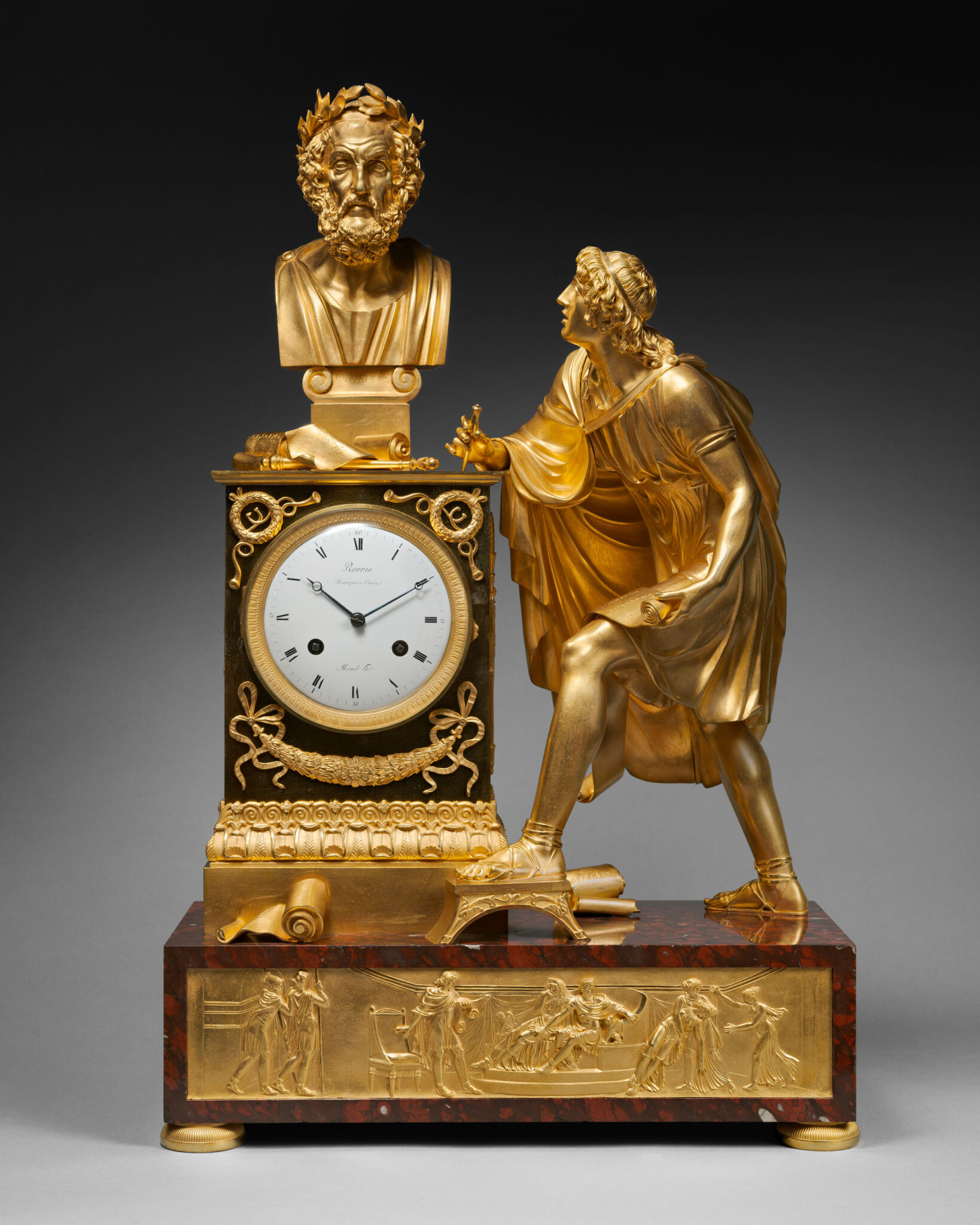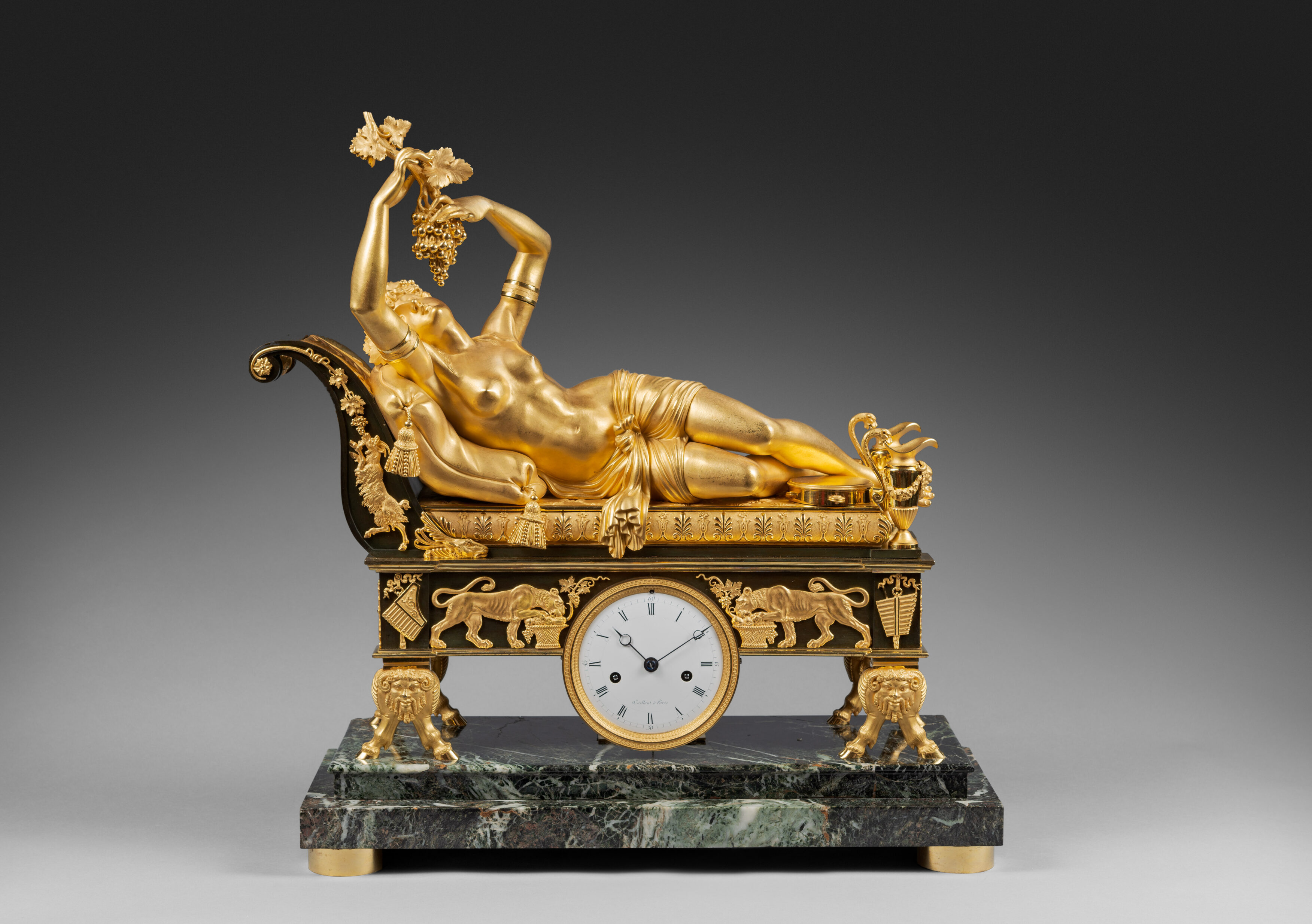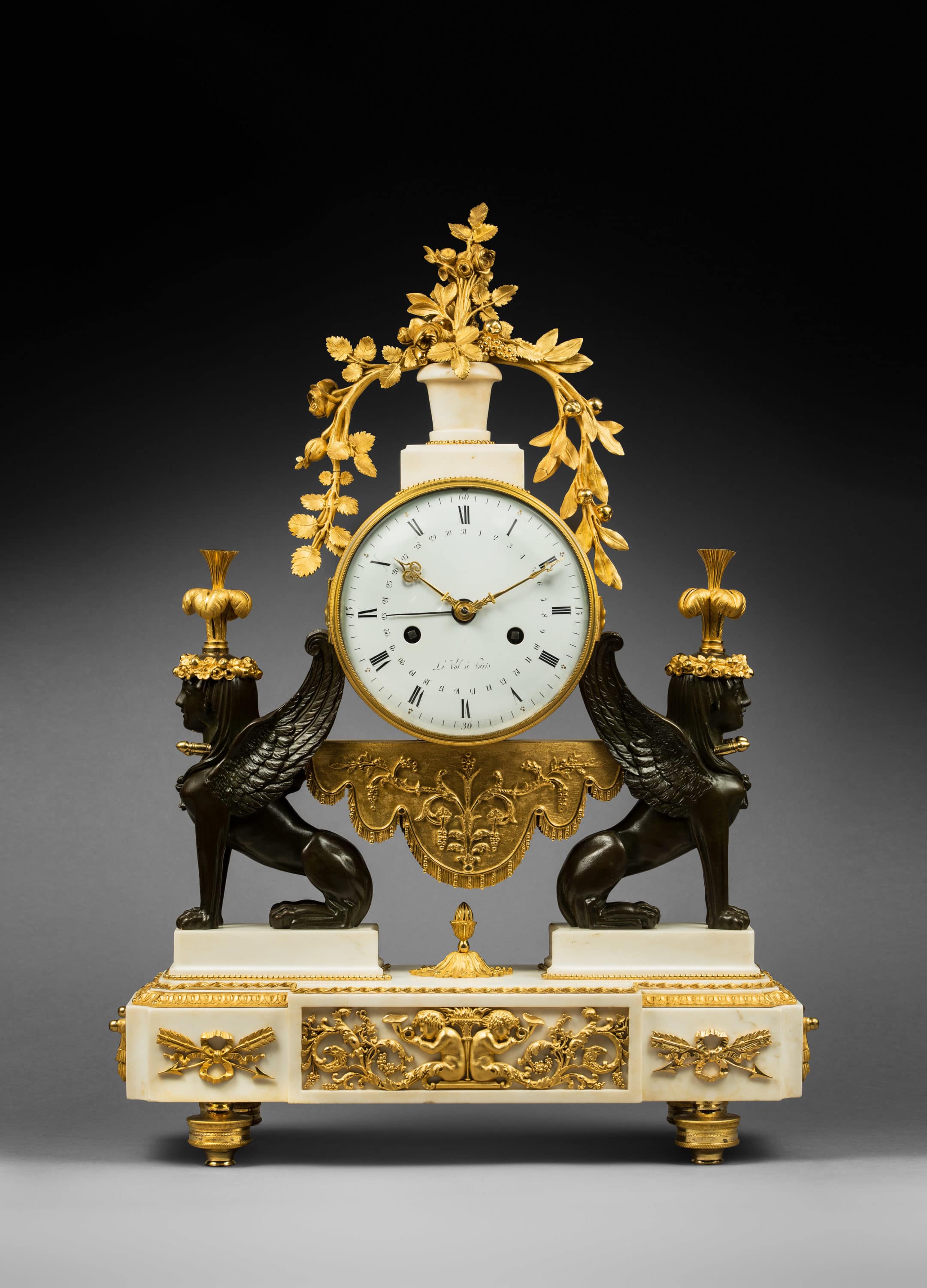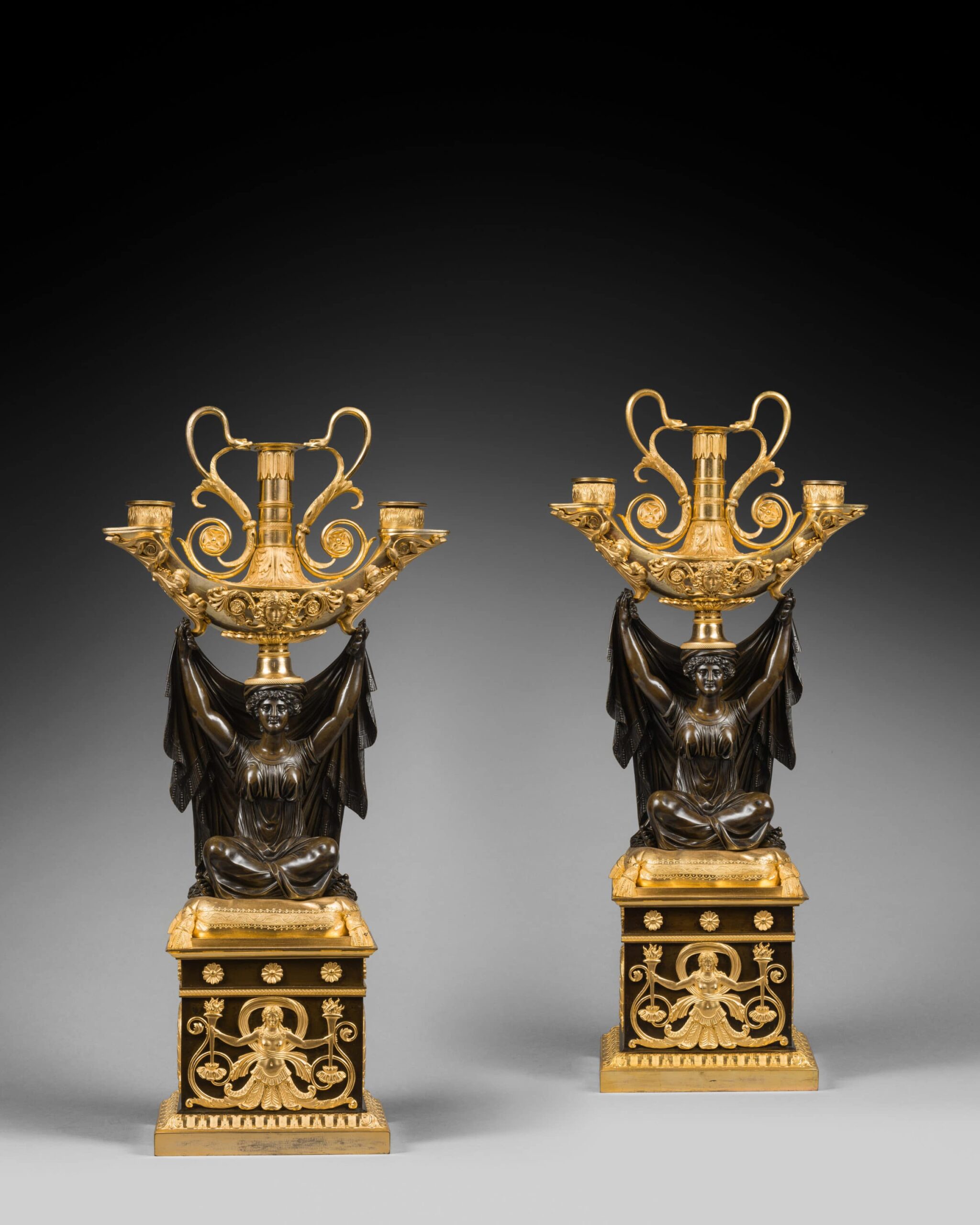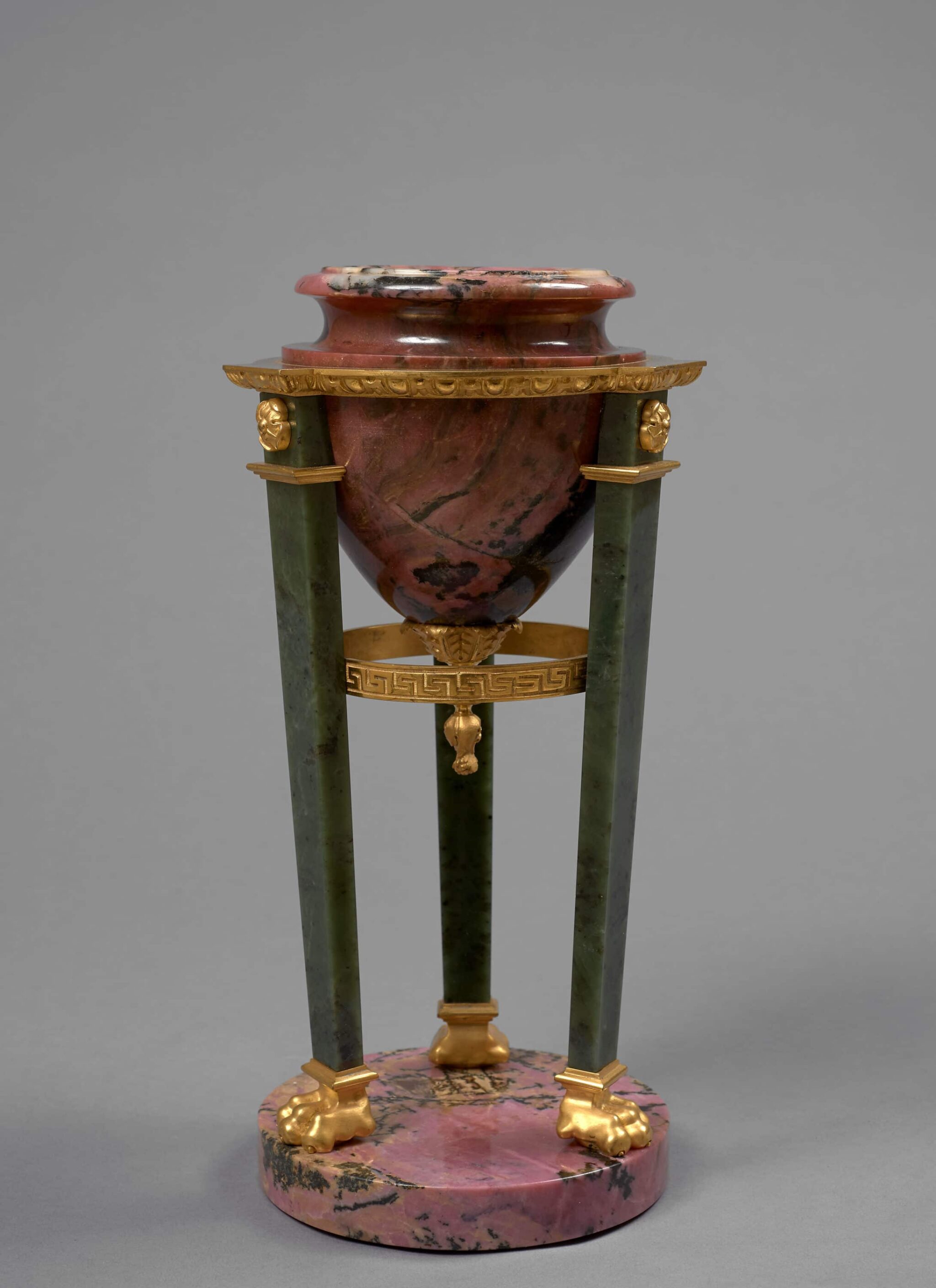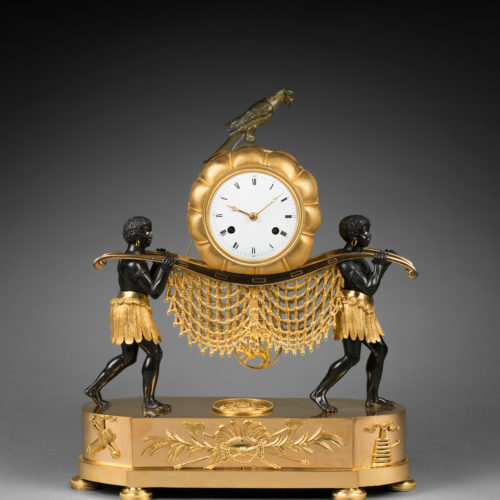Rare Mantel Clock Made of Gilt and Patinated Bronze with Matte Finishing and Enamel
“The Stretcher Bearers”
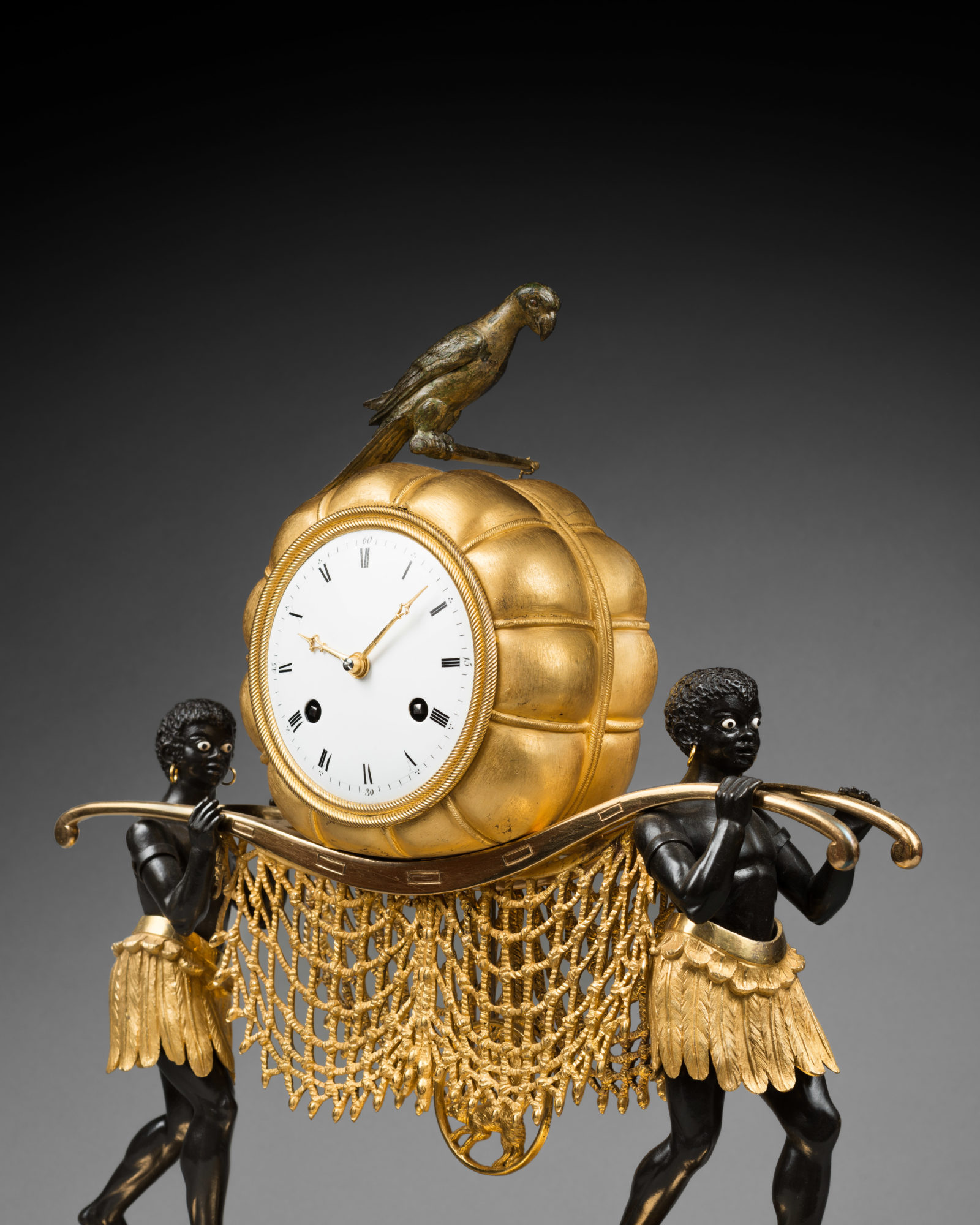
Attributed to Parisian Bronze Caster Louis-Isidore Choiselat, known as Choiselat-Gallien (1784-1853)
Paris, Empire period, circa 1810
The round white enamel dial indicates the Roman numeral hours and the Arabic numeral fifteen-minute intervals by means of two pierced gilt bronze hands. It is fitted in a simulated bale of cotton that is tied by cords and on which sits a parrot on a perch. The cotton bale is placed on a stretcher from which is suspended a net behind which one sees the pendulum, whose bob is made up of a medallion with a pierced squirrel motif. The stretcher rests on the shoulders of two fine figures representing young black men, with enamel eyes. They are wearing earrings and feather loincloths. The figures stand on a quadrangular base with rounded sides that is adorned with applied motifs of ribbon-tied musical instruments and a plumed headdress, with palms, a bead necklace, and crossed oars. In the center of the terrace there is a large flower blossom within a beadwork frame. The clock is raised on flattened ball feet that are adorned with interlace friezes centered by cabochons.
Discover our entire collection of antique french empire mantel clocks for sale online or at the gallery.
La Pendulerie is the specialist in fine and rare antique clocks, based in Paris.
Toward the end of the 18th century, influenced by the philosophical writings of Jean-Jacques Rousseau, who extolled the virtues of a return to Nature through the idea of the “noble savage”, exoticism became very popular, and was further popularized by contemporary literature. The novel “Paul and Virginie”, written by Bernardin de Saint-Pierre in 1788, was a great literary success; it echoed the well known “Robinson Crusoe” by Daniel Defoe, the novel “Les Incas” by Marmontel, which was published during the American Revolutionary War, and “Atala” by Chateaubriand, which was published in 1801. All these books had a profound influence on the European attitude to other civilizations and created a powerful Romantic nostalgia linked to the quest for a pagan Garden of Eden that could be regenerated by Christianity. As is often the case in the French decorative arts, this movement influenced artistic creations, and particularly those in the fields of horology and lighting. The present clock was created within this particular context; its model, known as “The Stretcher Bearers”, is one of the rarest of the “au nègre” category of clocks.
Among the small number of comparable clocks, some of which include variations in their design, one example, which is surmounted by a group inspired by Paul and Virginie, is in the Musée Duesberg in Mons (illustrated in the exhibition catalogue “De Noir et d’Or, Pendules ‘au bon sauvage’”, Musées Royaux d’Art et d’Histoire, Bruxelles, 1993). A second clock is illustrated in P. Kjellberg, Encyclopédie de la pendule française du Moyen Age à nos jours, Paris, 1997, p. 344. One further example, by the bronzier Louis-Isidore Choiselat, known as Choiselat-Gallien, is illustrated in H. Ottomeyer and P. Pröschel, Vergoldete Bronzen, Die Bronzearbeiten des Spätbarock und Klassizismus, Band I, Munich, 1986, p. 379, fig. 5.15.20. It is the basis for our attribution of the present clock to Choiselat, an important Parisian bronzier of the Empire period.
